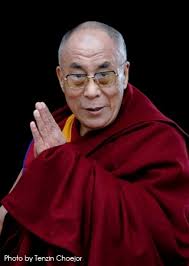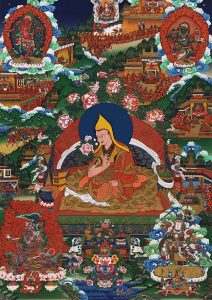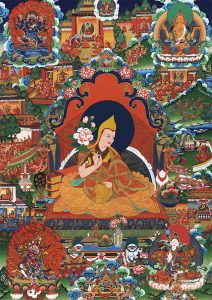The Dalai Lama is a high lama in the Gelug or “Yellow Hat” school of Tibetan Buddhism, founded by Tsongkhapa (1357–1419). The name is a combination of the Sino-Mongolian word dalai meaning “big sea” and the Tibetan word bla-ma meaning “guru, teacher”.
According to Tibetan Buddhist doctrine, the Dalai Lama is the rebirth in a line of tulkus who are considered to be manifestations of the bodhisattva of compassion, Avalokiteśvara. The Dalai Lama is often thought to be the leader of the Gelug School, but this position belongs officially to the Ganden Tripa, which is a temporary position appointed by the Dalai Lama who, in practice, exerts much influence. The line of Dalai Lamas began as a lineage of spiritual teachers; the 5th Dalai Lama assumed political authority over Tibet.
For certain periods between the 17th century and 1959, the Dalai Lamas sometimes directed the Tibetan government, which administered portions of Tibet from Lhasa. The 14th Dalai Lama remained the head of state for the Central Tibetan Administration (“Tibetan government in exile”) until his retirement on March 14, 2011. He has indicated that the institution of the Dalai Lama may be abolished in the future, and also that the next Dalai Lama may be found outside Tibet and may be female.
The Chinese government rejected this and asserted that only it has the authority to select the next Dalai Lama.










